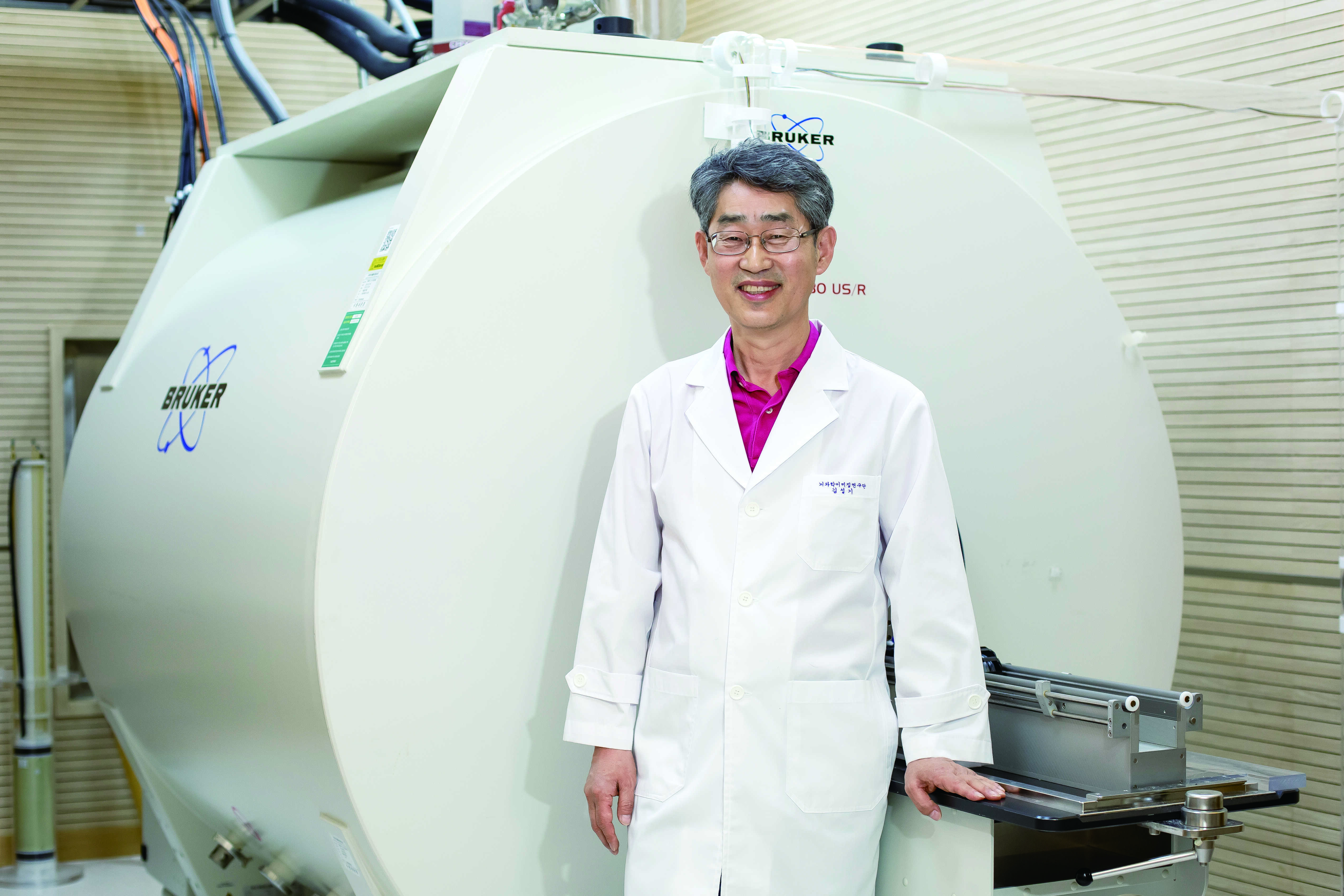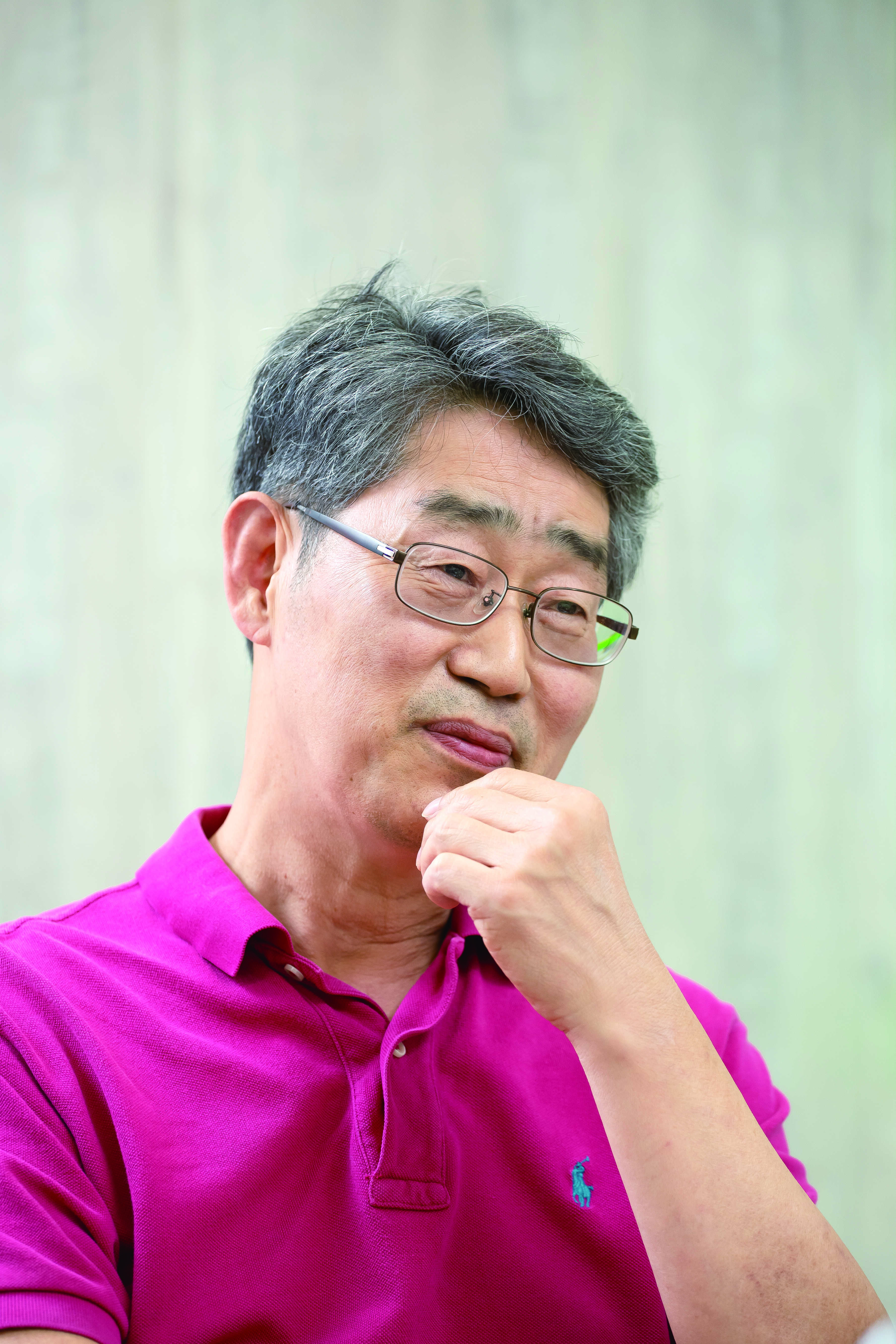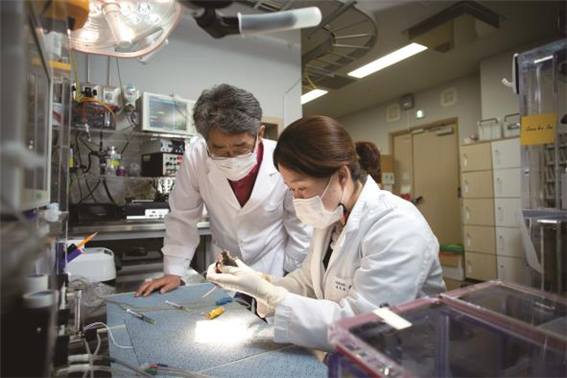주메뉴
- About IBS 연구원소개
-
Research Centers
연구단소개
- Research Outcomes
- Mathematics
- Physics
- Center for Underground Physics
- Center for Theoretical Physics of the Universe (Particle Theory and Cosmology Group)
- Center for Theoretical Physics of the Universe (Cosmology, Gravity and Astroparticle Physics Group)
- Dark Matter Axion Group
- Center for Artificial Low Dimensional Electronic Systems
- Center for Theoretical Physics of Complex Systems
- Center for Quantum Nanoscience
- Center for Exotic Nuclear Studies
- Center for Van der Waals Quantum Solids
- Center for Relativistic Laser Science
- Chemistry
- Life Sciences
- Earth Science
- Interdisciplinary
- Center for Neuroscience Imaging Research (Neuro Technology Group)
- Center for Neuroscience Imaging Research (Cognitive and Computational Neuroscience Group)
- Center for Algorithmic and Robotized Synthesis
- Center for Genome Engineering
- Center for Nanomedicine
- Center for Biomolecular and Cellular Structure
- Center for 2D Quantum Heterostructures
- Center for Quantum Conversion Research
- Institutes
- Korea Virus Research Institute
- News Center 뉴스 센터
- Career 인재초빙
- Living in Korea IBS School-UST
- IBS School 윤리경영


주메뉴
- About IBS
-
Research Centers
- Research Outcomes
- Mathematics
- Physics
- Center for Underground Physics
- Center for Theoretical Physics of the Universe (Particle Theory and Cosmology Group)
- Center for Theoretical Physics of the Universe (Cosmology, Gravity and Astroparticle Physics Group)
- Dark Matter Axion Group
- Center for Artificial Low Dimensional Electronic Systems
- Center for Theoretical Physics of Complex Systems
- Center for Quantum Nanoscience
- Center for Exotic Nuclear Studies
- Center for Van der Waals Quantum Solids
- Center for Relativistic Laser Science
- Chemistry
- Life Sciences
- Earth Science
- Interdisciplinary
- Center for Neuroscience Imaging Research (Neuro Technology Group)
- Center for Neuroscience Imaging Research (Cognitive and Computational Neuroscience Group)
- Center for Algorithmic and Robotized Synthesis
- Center for Genome Engineering
- Center for Nanomedicine
- Center for Biomolecular and Cellular Structure
- Center for 2D Quantum Heterostructures
- Center for Quantum Conversion Research
- Institutes
- Korea Virus Research Institute
- News Center
- Career
- Living in Korea
- IBS School
News Center
| Title | 1+1+1+1+1=∞ Paving a Path of His Own and Setting a Milestone in World History | ||||
|---|---|---|---|---|---|
| Name | 전체관리자 | Registration Date | 2022-01-11 | Hits | 2413 |
| att. |
 thumb.jpg
thumb.jpg
|
||||
1+1+1+1+1=∞ Paving a Path of His Own and Setting a Milestone in World HistoryThe superheroes in the mega-hit Avengers series, each demonstrating a unique superpower, join forces to resolve issues that threaten the universe. The same applies to modern science. By bringing together scientists dedicated to different disciplines and offering them the opportunity to cooperate with one another, synergy can be created. We met with Director KIM Seong Gi of the Center for Neuroscience Imaging Research and heard about the Avengers-like team he set up at the IBS.
The Sungkyunkwan University N Center, located in Suwon, Gyeonggi-do, was completed in 2015. It is the home of the IBS Center for Neuroscience Imaging Research, which occupies the building’s basement floor and three above-ground floors. All non-laboratory spaces, including conference rooms and offices, are surrounded with floor-to-ceiling glass walls, providing unobstructed views of the interior of the Center. Remaining faithful to the human instinct of pursuing new experiences and accepting a job in Korea“I designed the entire workspace of the Center from the basement floor to the third floor. I hoped that the design would encourage all researchers to communicate closely and share information about the focus of their research. Many found the offices surrounded with floor-to-ceiling glass walls unfamiliar at first, but they quickly adapted to the new environment.” Director KIM Seong Gi of the Center for Neuroscience Imaging Research explained as such regarding the glass walls. He has poured much time and effort into creating an optimal working environment ever since he was appointed the third director of an IBS center in 2013. As the name of the Center implies, Director Kim specializes in research that involves measuring brain reactions with fMRI (functional magnetic resonance imaging). Before joining the IBS, he had served as the Paul C. Lauterbur Chair Professor at the University of Pittsburg in the US. Paul C. Lauterbur (1929-2007) was a scientist who shared the Nobel Prize in Physiology or Medicine in 2003 for the development of magnetic resonance imaging (MRI). After he passed away in 2007, the University of Pittsburgh, his alma mater, created a chair professorship in his honor. It is an esteemed position requiring the fulfillment of stringent eligibility conditions as well as the acknowledgment by the late Professor Lauterbur’s family. “When I notified the University that I would resign and go to Korea in 2013, it tried to persuade me to stay by offering to grant any wishes. But my desire to take on a new challenge was stronger.” Although he is a leading expert in fMRI today, he actually obtained his PhD in physical chemistry. He focused on nuclear magnetic resonance (NMR) for his post-doctorate study, which was in the field of chemistry. In 1991, when he was deciding between staying in the US or returning to Korea after finishing this course, he heard that the University of Minnesota was looking for a researcher to conduct research using its newly purchased 4T MRI and made the drastic decision to change his field of research. “I believe I have mostly achieved good results every time I took a drastic turn. At the time I was entertaining the possibility of stepping into a new field after spending more than a decade in the fMRI field. One of my colleagues at the University of Pittsburgh encouraged me to take a bold step to bring changes to my personal life or field of research. That was when the IBS reached out to me.” Choosing the road not taken to compete against the first moversAfter agreeing to come to Korea, Director Kim was inevitably concerned about the Center’s future direction. IBS is a research institution established to perform world-class basic science research. Director Kim judged that it would not be able to vie with globally renowned institutions if it followed the conventional path.
“A research group’s competitiveness is directly proportional to its size. At Pittsburgh, for instance, the number of professors who study the brain exceeds 100. Realistically, it is not feasible in Korea to run a research group in that manner. I had to find another way.” The current Center for Neuroscience Imaging Research is the brainchild of Director Kim’s strenuous efforts to run neck and neck with world-class institutions. He decided to expand its size by going beyond MRI and encompassing diverse fields. As a result, teams of five different fields are established within the Center. In addition to the MRI Team headed by Director Kim, there are the MR Physics and Engineering Team, Neurovascular Imaging Team, Human Brain Mapping Team, Systems Neuroscience Team and Computational Team. Each team independently engages in research in its corresponding field while complementing one another in an organic manner. Director Kim said, “It may seem as if this system creates no synergy in the short term, but in the longer term, it will help reap the results we desire.” Over 350 published papers are posted on the Center’s website. As we were startled by the sheer volume, Director Kim tried to explain the details, waving his hands to calm us down. He said the Center was still at the starting point of its long journey. “It normally takes several years to properly write a paper. In the first three years from 2013, we prioritized putting the Center on the right track rather than on launching research projects. Papers describing the actual achievements of the Center began to come out only last year after the Center’s operations finally went into full gear.” At our request to name a few, Director Kim mentioned two papers. One was the study that defined the correlation between the changes in blood flow and neuronal cells1). The excitability of neuronal cells is an important element for identifying brain reactions. For example, it is the first essential step in identifying the fundamental treatment option for symptoms incurred by the excessive excitation of neuronal cells, such as epileptic seizures, by examining when and how they are excited. The research team succeeded in explaining how the blood flow rate of the brain influences the excitability of neuronal cells. The other was the study that discovered how the brain reacts when colors are perceived2). Whereas previous studies had difficulties in telling whether the brain was actually recognizing different colors or merely responding to the related actions (e.g., the change of color swatches, etc.), this study succeeded in uncovering the brain mechanism using a more precise method. What connects these studies of seemingly unrelated fields is the use of fMRI technology, which is Director Kim’s specialty. The Center aims to achieve two goals. The first is to complete the map of the cognitive functions of the human brain. The map will illustrate how the brain responds when playing games, reading books, and having a dialogue with others. The second is to create a map of the brain of the mouse, a lab animal used for experimentation, to provide advanced information for research projects utilizing mice. If it has to be done, do it joyfully and responsibly“If I had created a research group in the US, I would not have done it this way (combining different teams) because it is highly challenging to take responsibility for fields that I am not familiar with. But I have strong confidence in the experts that I am working with, and we are marching forward together.” Director Kim added that, although it is challenging to serve as a chief researcher, it still has many advantages such as exploring diverse fields through collaboration with related experts. “When advancing into a new field of research, you have to start from scratch and try to learn the basics first as a newcomer. During this process, you often come across opportunities to discover something unseen or overlooked by existing researchers. At least, that is what I have experienced. It was always difficult at first, but it worked out well in the end.” Then, what was his driving force in wading through such an arduous process? Director Kim’s answer was simple. It was “joy”. “Each research project is hard and strenuous, but each brings great joy when it is completed. It is similar to mountain climbing. It is exhausting to climb a mountain, but you feel overjoyed when you reach the peak.” He laughed out loud, saying that he would not have remained a professor over such a long period if he pursued money or fame. We asked one last question, cliché but unavoidable, to this researcher who seems truly immersed in the joy of research. When asked what advice he has for junior researchers at the start of their career, his answer came out without hesitation. “Think of yourselves as the chief researcher and participate in the project more actively. The entire process may be exhausting and demanding, but you will certainly be able to enjoy a greater sense of achievement if you participate more actively. If it has to be done and cannot be avoided, why not find a way to enjoy it every step of the way?”
References 1) Hyun Seok Moon, Haiyan Jiang, Thanh Tan Vo, Won Beom Jung, Alberto L Vazquez, and Seong-Gi Kim, Contribution of excitatory and inhibitory neuronal activity to BOLD fMRI, CEREBRAL CORTEX, 1-15(2021). 2) Insub Kim, Sang Wook Hong, Steven K. Shevell, and Won Mok Shim, Neural representations of perceptual color experience in the human ventral visual pathway, PNAS 117(23), 13145-13150(2020) |
|||||
| Next | |
|---|---|
| before |
- Content Manager
- Public Relations Team : Yim Ji Yeob 042-878-8173
- Last Update 2023-11-28 14:20














